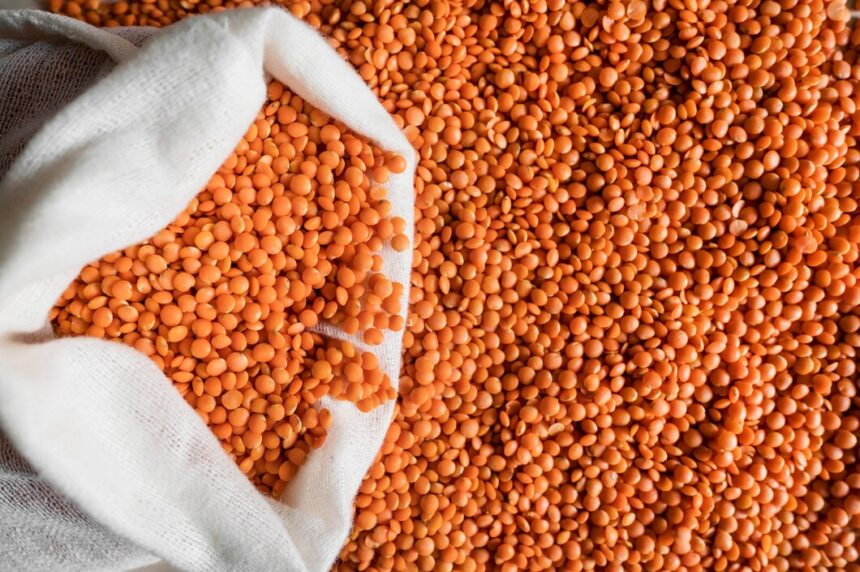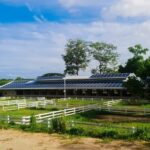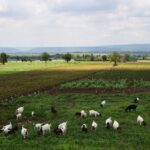Lentils are a highly nutritious and versatile legume, becoming increasingly important in South Africa due to their health benefits and market demand. To maximize the quality and yield of lentils, farmers can adopt several agronomic practices and technologies. Here are key techniques to enhance lentil production in South Africa:
1. Soil Preparation and Fertility Management
Lentils thrive in well-drained, loamy soils with a pH between 6 and 7. Proper soil preparation involves tilling to break up compacted layers and incorporating organic matter to improve soil structure. Conducting soil tests to determine nutrient levels is crucial. Based on the results, farmers should apply the necessary fertilizers, including phosphorus and potassium, to ensure adequate nutrient availability throughout the growing season.
2. Selecting High-Quality Seeds
Using high-quality, disease-resistant lentil varieties is fundamental for achieving good yields. Farmers should select seeds that are certified and suited to local growing conditions. Improved varieties that offer resistance to common pests and diseases can significantly enhance productivity and reduce the need for chemical interventions.
3. Optimal Planting Time
Timing is critical in lentil cultivation. In South Africa, lentils are typically planted during the cool, dry winter months. Farmers should aim to plant as early as possible within the planting window to take advantage of the optimal growing conditions and to ensure the crop matures before the hot summer months. This reduces the risk of heat stress and drought.
4. Proper Plant Spacing and Density
Maintaining the appropriate plant spacing and density is essential for maximizing yields. Lentils should be planted at a density that allows for adequate air circulation, reducing the risk of fungal diseases. Row spacing of 20-30 cm and plant spacing of 5-10 cm are generally recommended. This spacing facilitates effective weed management and ensures that each plant has sufficient resources.
5. Efficient Irrigation Practices
Lentils are relatively drought-tolerant but still require adequate moisture, especially during critical growth stages like flowering and pod filling. Implementing efficient irrigation practices, such as drip or sprinkler irrigation, can ensure consistent moisture levels without waterlogging. Scheduling irrigation based on soil moisture monitoring can optimize water use and prevent stress.
6. Integrated Pest Management (IPM)
Adopting an integrated pest management approach can help control pests and diseases while minimizing chemical use. This involves regular monitoring of the crop for signs of pest and disease activity, using biological controls such as beneficial insects, and applying organic or chemical treatments only when necessary. Crop rotation and intercropping with non-host plants can also reduce pest pressure.
7. Weed Control
Effective weed management is crucial for reducing competition for nutrients, water, and light. Farmers should implement a combination of mechanical weeding, mulching, and the use of pre-emergent herbicides to control weeds. Regular monitoring and timely interventions are essential to keep weed populations under control.
8. Use of Rhizobium Inoculants
Lentils, being legumes, have the ability to fix atmospheric nitrogen through a symbiotic relationship with Rhizobium bacteria. Inoculating seeds with the appropriate Rhizobium strains before planting can enhance nitrogen fixation, reducing the need for synthetic nitrogen fertilizers and promoting healthier, more vigorous plants.
9. Harvest Timing and Techniques
Harvesting lentils at the right time is critical to maximize yield and quality. Lentils should be harvested when the lower pods are mature and dry, but before the upper pods shatter. Using proper harvesting techniques, such as using a combine harvester adjusted for lentils, can minimize losses and ensure that the beans are collected efficiently.
10. Post-Harvest Handling and Storage
Proper post-harvest handling and storage are essential to maintain the quality of lentils. After harvesting, lentils should be dried to a moisture content of around 14% to prevent mold growth and spoilage. Clean, dry storage facilities with good ventilation are necessary to protect the lentils from pests and environmental damage. Regularly monitoring stored lentils for signs of pests or moisture problems can prevent significant losses.
Enhancing the quality and yield of lentils in South Africa requires a comprehensive approach that includes careful soil management, the use of high-quality seeds, optimal planting practices, efficient irrigation, and integrated pest management. By adopting these techniques, South African farmers can improve their lentil production, contributing to food security and economic stability. Implementing these best practices will ensure that lentil farming remains a viable and profitable agricultural enterprise in the region.
Join 'Farmers Mag' WhatsApp Channel
Get the latest Farming news and tips delivered straight to your WhatsApp
CLICK HERE TO JOIN






